IF you were asked: “What is the most common mammal in Australia?” what would be your reply?
Humans? Not even close; our population is hovering around 24 million.
Cattle? Although we do have the most expansive cattle grazing stations in the world (yes, even bigger than those in Texas), due to the desiccated land on which they sit, they only carry a total of about 28 million head.
Kangaroos? No, an estimated 55 million of them are hopping about this wide brown land, including all large members of the macropod family.
Sheep? Known as the nation that rode to prosperity on the sheep’s back, we currently have 74 million sheep on grazing properties from coast to coast.
So what is the answer? The most recent estimate of the feral rabbit population in Australia is a staggering 200 million! If you think that number is high, before the release of the myxoma virus in the 1950s, an astonishing 600 million of the little environmental vandals were running around the countryside.
The reason for sharing those statistics isn’t to help you score points at the next trivia night you attend (though it may help). Rabbits are significantly detrimental to the environment in a few ways. Their ability to quickly breed in numbers that, left uncontrolled, can reach plague proportions sees them competing with native herbivores such as potoroos, bettongs, pademelons and so on.
Their burrowing, along with their habit of grazing vegetation down to bare earth in semi-arid country, is a major cause of soil erosion. Wind and water carry away the thin layer of topsoil, which can take a lifetime to be regenerated, and that only happens if conditions are favourable.
There is still a commonly held belief among city dwellers that no rabbits exist in Queensland. Unfortunately, that is far from true, with rabbits present in large numbers and very widespread throughout the state. If you look at the government’s Feral Scan website you’ll notice clusters of recorded sightings in close proximity to major population centres.
That doesn’t necessarily mean that is where the highest numbers of rabbits exist. Statistics can appear that way, simply because more people naturally equates to more sightings. Rabbits are very adaptable, much to the detriment of our fragile natural environments.
Significant populations of bunnies live in habitats far removed from the green temperate meadows you might imagine they require. During my travels in Queensland I’ve seen them in the tropics in dry country around Townsville and as far north as Atherton in semi-rainforest locations.
I’ve spotted them right across inland areas including the Sturt National Park at Cameron Corner, Quilpie and Currawinya National Park, just to name a few. Central Queensland has not escaped the problem, with rabbits passing through my headlight beams on roads around Mount Morgan, Emerald, Augathella and Blackall.
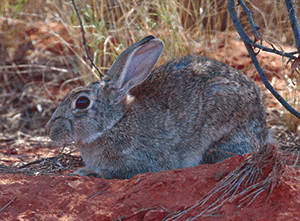
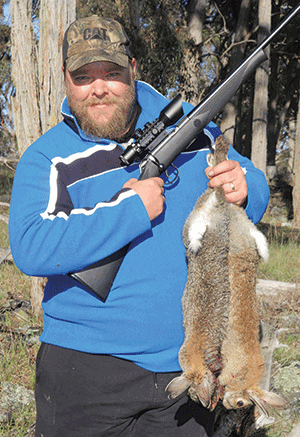
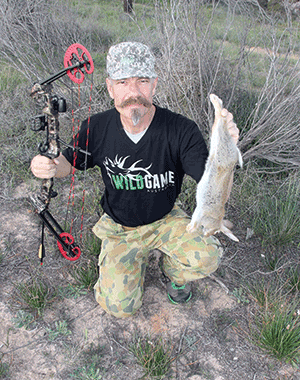
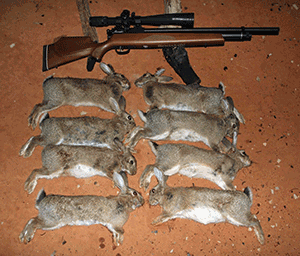
Biological controls have been used nationwide and have proven very effective in significantly reducing the population. As impressive as the impact of various viral controls has been, the mop-up needs to be done using traditional methods to prevent the remaining, resistant animals rebuilding the population.
Because the majority of the country involved is freehold farming land, the financial and manpower burden largely falls upon the shoulders of our already time-poor families on the land.
Helping to bear that burden is where recreational hunters can play an important role. The anti-hunting brigade derides hunters as sadists who hunt purely for the joy of killing ‘harmless’ animals for trophies. Like thousands of other Australian hunters, my sole motivator is to protect our natural ecosystems by helping contain the numbers of introduced pest animals.
None of the firearms or bows in my gun safe have been used to take any animals native to Australia, including those considered pests by many. Of course, it makes sense not to waste those pest animals culled, so the greater majority of suitable animals also provide meat for the table in my house.
Rabbit is a common dish on my plate and is always a welcome protein source for someone who rarely eats beef or lamb. Those same misguided protest addicts will eat meat from a supermarket while pointing the finger at hunters for cruelty. They’ve obviously never visited the knocking blocks of an abattoir where their supermarket beef is slaughtered.
A bullet to the brain is completely painless and preceded by no stress, unlike the commercial alternative; but I digress. Knowing the extent of the rabbit problem in Queensland means many hunters actively seek out opportunities to reduce the pest’s numbers.
While you may argue that a few bunnies taken by recreational hunters won’t control the problem, every animal removed from the wild equals generations of offspring also removed, and every bit helps. Hunting rabbits requires only the most basic equipment, usually starting with a humble .22 LR rimfire rifle.
Of course, a quality knife is a must for field dressing any carcasses for the table, as is a decent light if you plan on hunting rabbits at night. Access to properties can be difficult to obtain for those new to the pastime, but joining a reputable association such as the Sporting Shooters’ Association of Australia can help.
Tactics don’t need to be too fancy, as simply walking through paddocks at times of low light and keeping a keen eye out will produce the goods. I regularly go huntting rabbits with a .25 calibre pre-charged pneumatic air rifle that is capable of head shots out to 90m with far more consistency than any .22 LR I’ve ever owned.
That said, I use it for short to medium range situations, enjoying the safety advantage of not needing to worry about ricochets or overshooting in the event of a miss (it happens to everyone). Some property owners that are reluctant to allow rifle hunters on their land will be open to having bowhunters visit.
The bow is limited in its range and adds an even greater safety factor. Using a bow also increases the challenge of the hunt, requiring the hunter to stalk to within fairly close range before taking a shot.
One last point regarding the usefulness of hunting with rifle or bow: these are often the only guaranteed species-selective means of control available to the landowner, unlike baiting or trapping.
 Bush 'n Beach Fishing Magazine Location reports & tips for fishing, boating, camping, kayaking, 4WDing in Queensland and Northern NSW
Bush 'n Beach Fishing Magazine Location reports & tips for fishing, boating, camping, kayaking, 4WDing in Queensland and Northern NSW

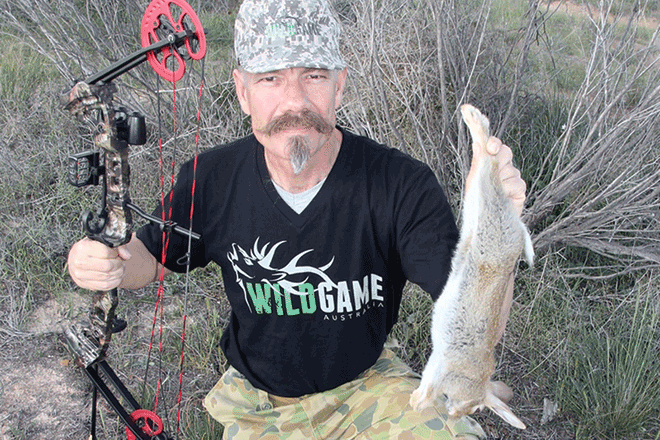




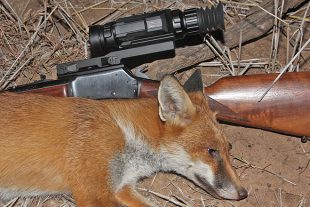

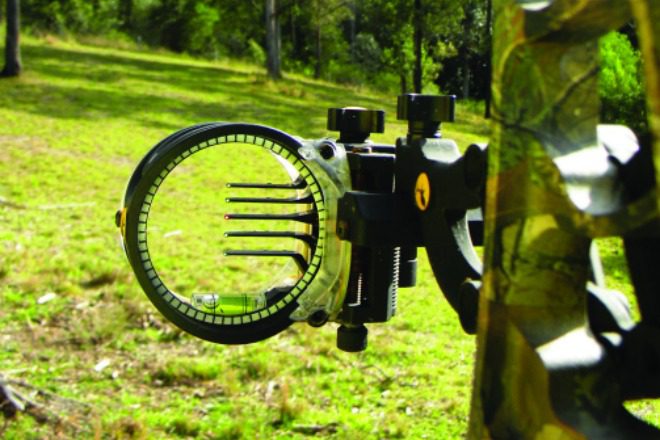

Great read for hunting overall. I agree, it should be read at the beginning of every season. Never forget the basics! Thanks
What a fantastic post! This is so chock full of useful information. I enjoyed reading